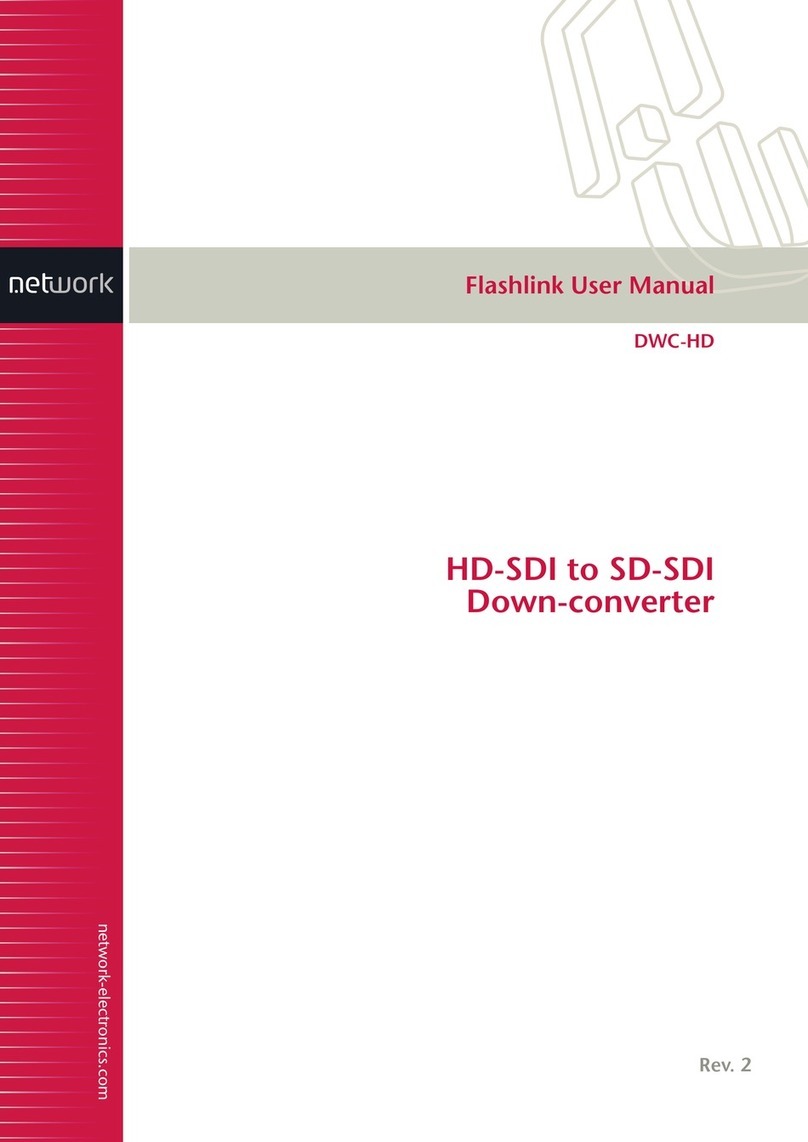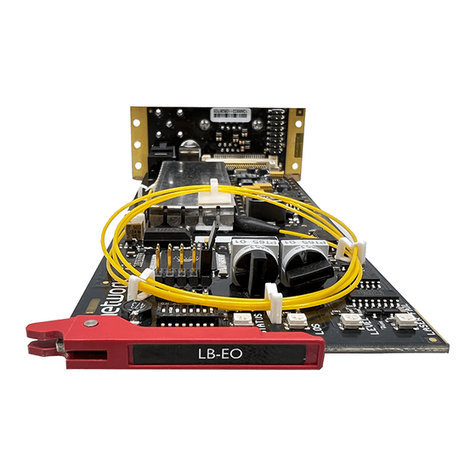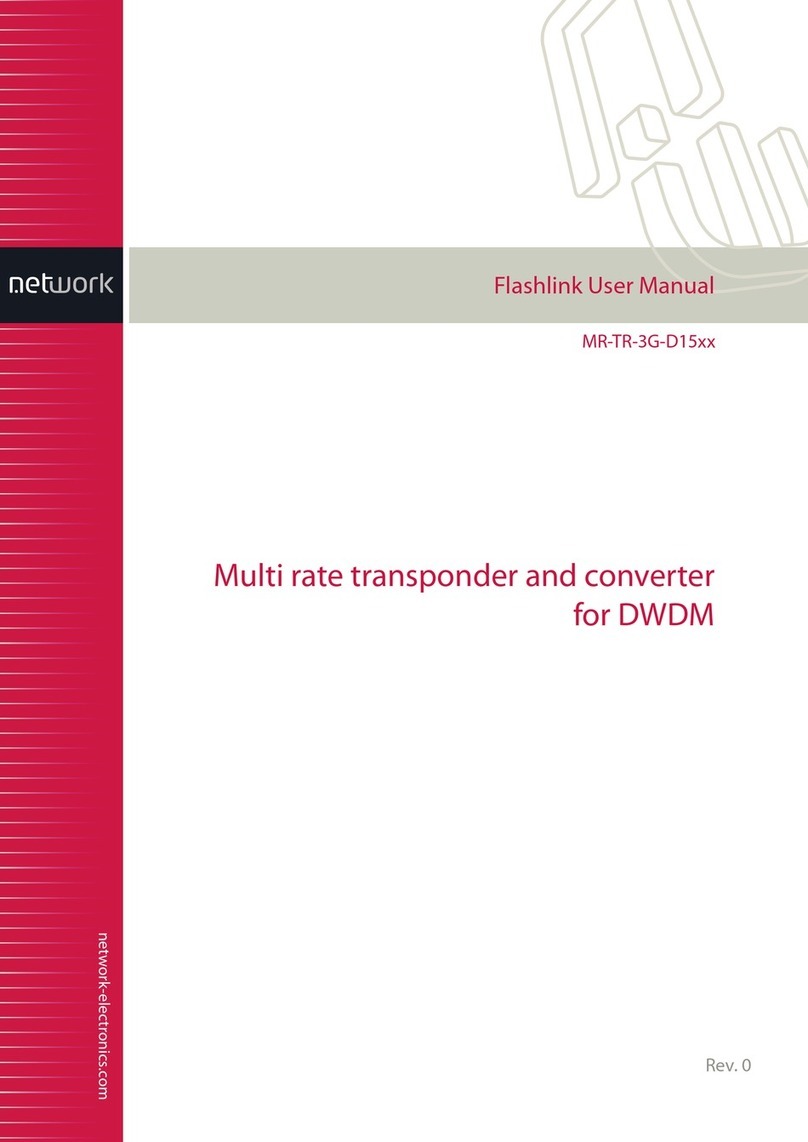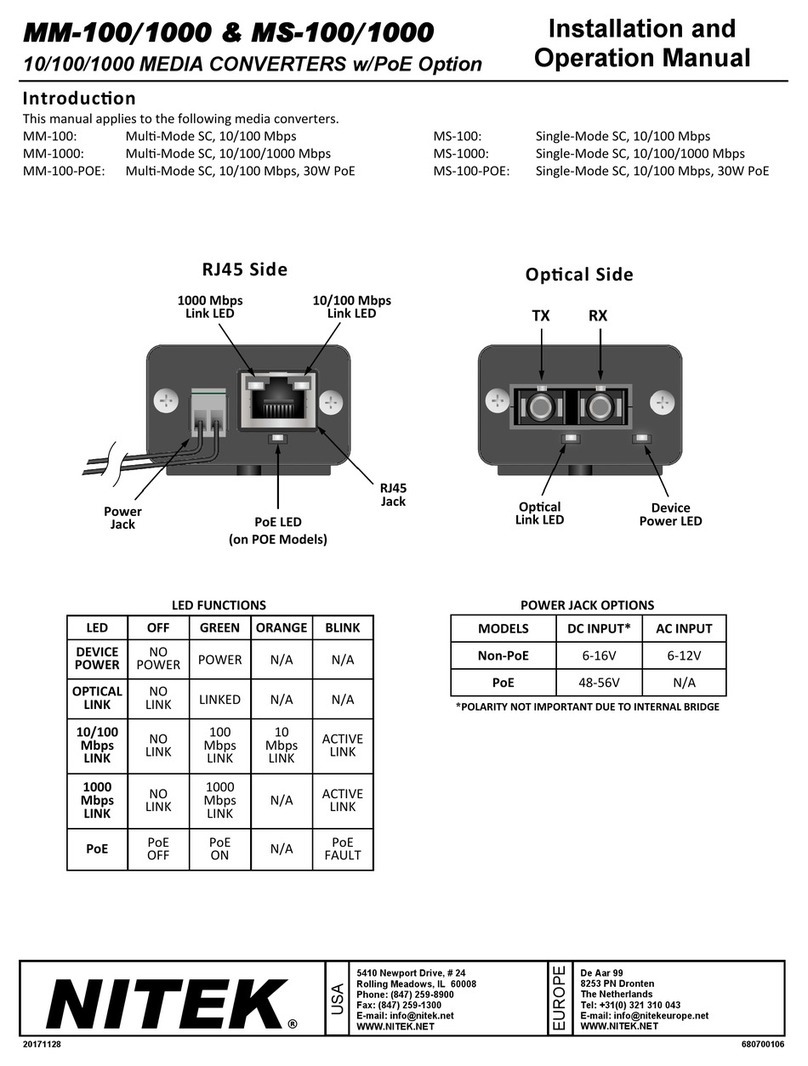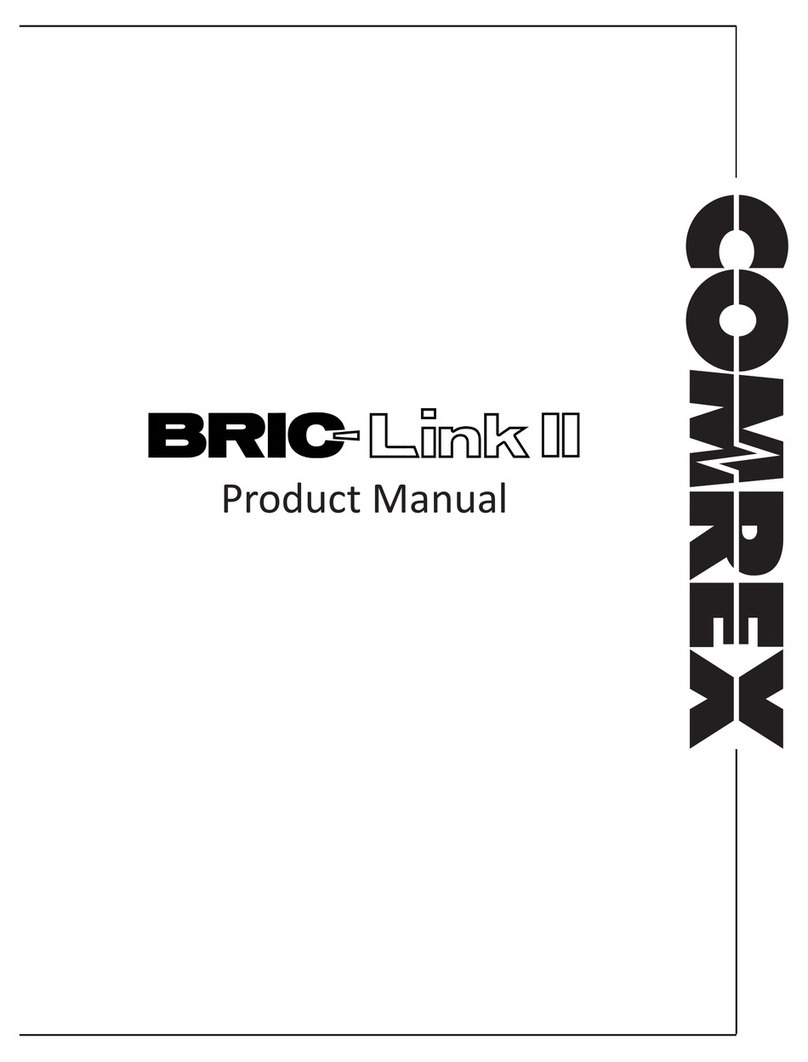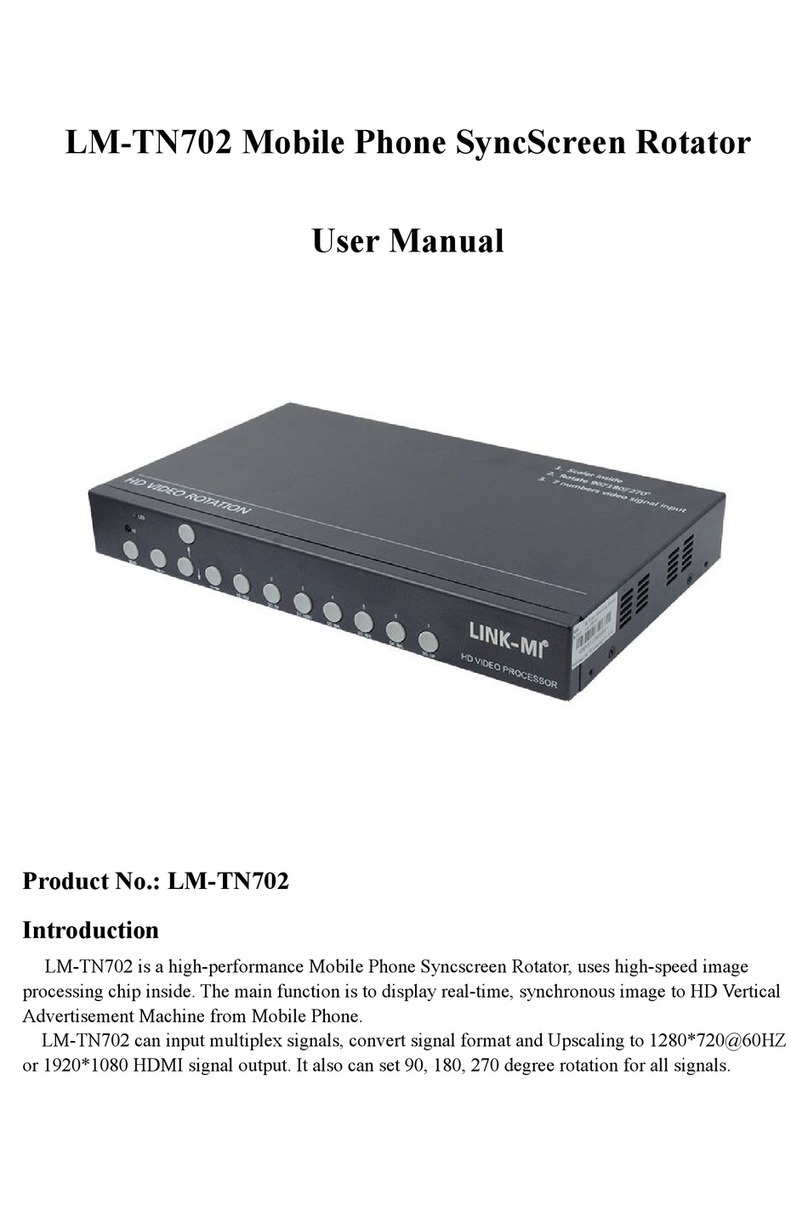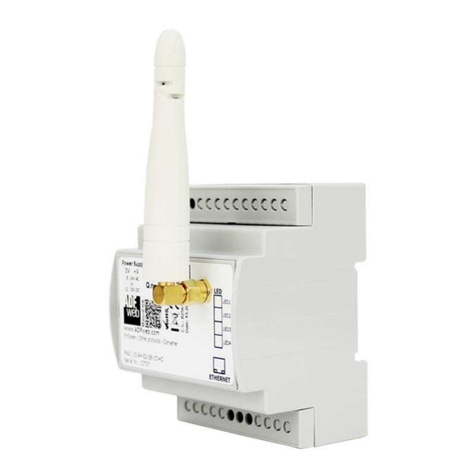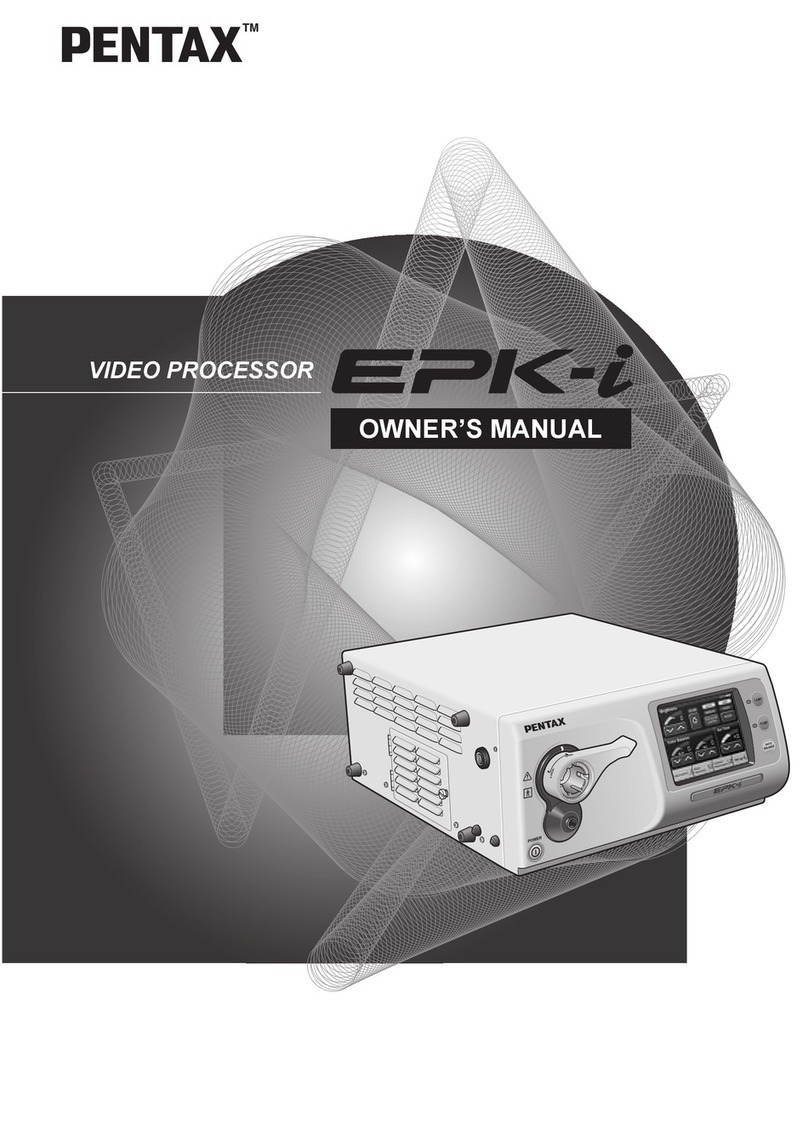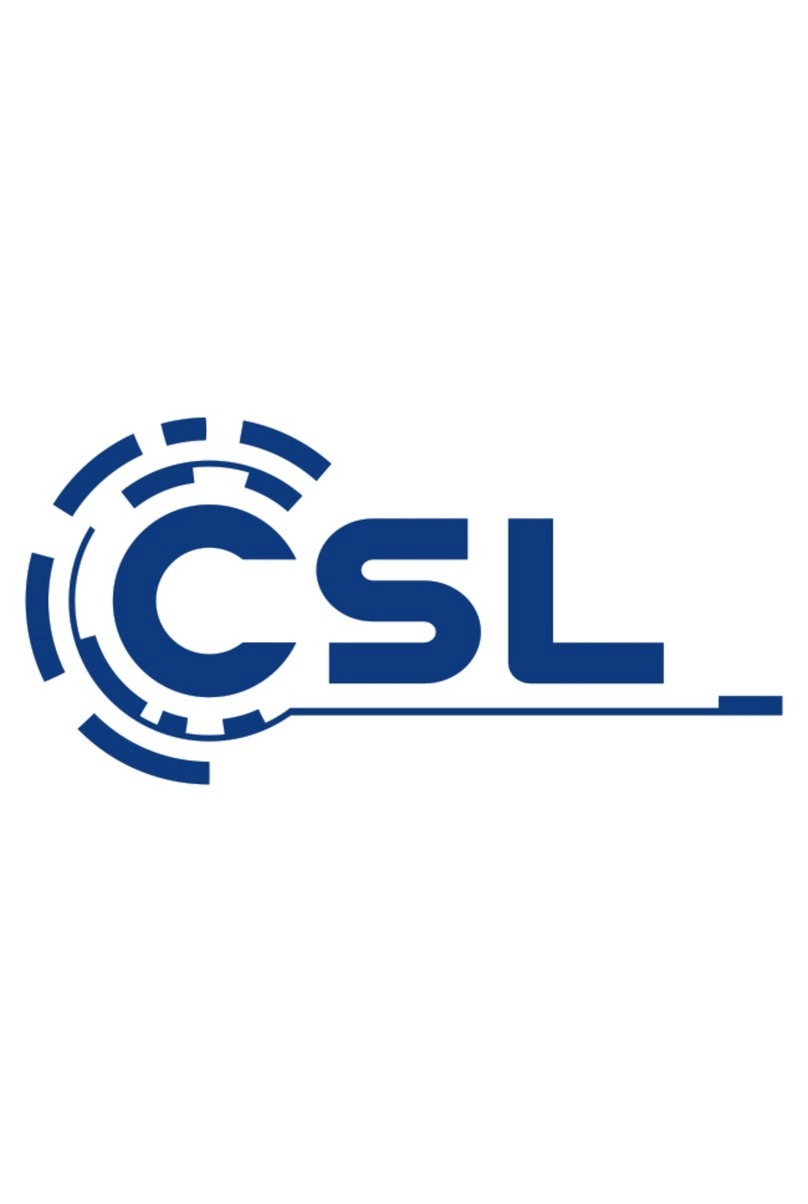network HD-EO User manual

network-electronics.com
High Definition Electrical to
Optical Converter
Rev. 2
Flashlink User Manual
HD-EO

HD-EO Rev. 2
2
Network Electronics ASA
Thorøya
P.O. Box 1020
Sandefjord, Norway
Phone: +47 33 48 99 99
Fax: +47 33 48 99 98
1Hwww.network-electronics.com
Service Phone: +47 90 60 99 99
Revision history
Current revision of this document is the uppermost in the table below.
Revision Replaces Date Change description
2 1 2007-10-26 New front page.
1 0 2007-10-05 Added Materials Declaration and EFUP
0 B 04/05/06 Added specs and configuration of HW version 2
B A 13/08/02 Corrected printing errors
A - 09/08/02 Preliminary release

HD-EO Rev. 2
3
Contents
Revision history............................................................................... 2
1 Product overview......................................................................... 4
2 Specifications .............................................................................. 6
2.1 Optical output.............................................................................................6
2.2 Electrical input.............................................................................................6
2.3 Electrical output ..........................................................................................6
2.4 Electrical ......................................................................................................7
2.5 Standards ....................................................................................................7
2.6 Product versions ..........................................................................................7
2.7 Connector module ......................................................................................8
2.8 Terminal format support..............................................................................9
3 Configuration ............................................................................ 10
3.1 Version 2 Configuration.............................................................................10
3.2 Version 1 Configuration.............................................................................11
4 Module status............................................................................ 12
4.1 GPI ALARM – Module Status Outputs ........................................................12
4.2 GPI connections ........................................................................................12
4.2.1 Version 2 GPI pinout...............................................................................12
4.2.2 Version 1 GPI pinout...............................................................................13
4.3 Front Panel - Status Monitoring .................................................................13
5 Laser safety precautions ............................................................. 15
General environmental requirements for flashlink®equipment ...... 16
Certificate of Conformity .............................................................. 17
Product Warranty ......................................................................... 18
Materials declaration and recycling information............................ 19
Materials declaration .................................................................... 19
Environmentally-friendly use period.............................................. 19
Recycling information................................................................... 20

HD-EO Rev. 2
4
1Product overview
The flashlink®HD-EO is a multi bit-rate electrical to optical converter module
providing high performance media conversion for various signal formats from
19.4Mbps up to 1485Mbps. This state of the art unit offers Fabry-Perot (F-P)
or “Distributed Feedback” (DFB) laser technology with long wavelength on
single mode fiber. Unmatched signal accuracy, even in critical applications
with pathological signal patterns makes the HD-EO the first choice for all
optical transport demands.
The HD-EO can transport all HD and SD signal formats in addition to DVB-ASI
and SMPTE 310. It can also perform signal reclocking, which is selectable on
application. The optical output comes with a sophisticated 1310nm F-P laser
covering the demands of short and medium haul applications, optionally a
DFB laser for medium and long haul applications, with 16 CWDM
wavelengths available. The open system platform of Network Electronics
flashlink®system allows easy interoperability with third party fiber optical
systems.
The electrical input(s) are equipped with a multi rate cable equaliser(s)
providing an equalisation of typically 100m of high quality coax cable at
1485Mbps. A distribution amplifier with 2 outputs reduces the need for
additional DA’s (on HW version 1, only one can be used for DVB-ASI).
Optionally, a built-in change-over can switch to the standby input if the main
input experiences a loss of signal (version 2 hardware only).
Figure 1 – HD-EO (Version 2) HD-SDI Electrical to Optical Converter

HD-EO Rev. 2
5
Figure 2 – HD-EO (Version 1) HD-SDI Electrical to Optical Converter

HD-EO Rev. 2
6
2Specifications
2.1 Optical output
Transmission circuit fibre: Single Mode.
Light source: F-P or DFB laser.
Optical power: -7.5dBm (F-P laser) or 0dBm (DFB laser).
Optical centre wavelength
(F-P laser):
1310nm ±20nm.
Optical centre wavelength
(DFB laser):
1270, 1290, 1310, 1330, 1350, 1370, 1390, 1410,
1470, 1490, 1510, 1530, 1550, 1570, 1590 or 1610nm
±6nm.
Temperature range: 0 to +50 degC.
Jitter (UI = Unit Interval): 0.135 UI max. @ 270Mbps,
0.2 UI max. @ 1485Mbps.
Connector Return Loss: >40dB with SM fibre.
Maximum reflected power: 4%
Connector: SC/UPC
2.2 Electrical input
Number of inputs: 2 (Hardware version 2),
1 (Hardware version 1).
Data rate NRZ: 19.4 to 1485 Mbps.
Equalisation: Automatic,
Cable equaliser and reclocker can be bypassed to support
bitrates down to 2Mbps.
Impedance: 75 ohm.
Return loss: >15dB @ 1485MHz.
Signal level: Nominal 800 mV.
Connector: BNC.
2.3 Electrical output
Number of outputs: 2.
Impedance: 75 ohm.
Return loss: >15dB @ 1485MHz.
Jitter: Maximum 0.2 UI
Peak to peak signal level: 0.8V ±0.1V
Signal polarity: Non-inverting (both, on Hardware version 2),
1 non-inverting + 1 inverting output (on HW version 1).
Connector: BNC.

HD-EO Rev. 2
7
2.4 Electrical
Power: +5 VDC, 3W Maximum.
Control: Control system for access to setup and module status
with BITE (Built-In Test Equipment).
2.5 Standards
Supported standards for electrical and optical ports:
SMPTE: SMPTE 292, SMPTE259M, SMPTE297, SMPTE305M,
SMPTE310.
DVB-ASI: EN50083-9.
2.6 Product versions
The following versions of HD-EO are available:
Part number Wavelength Laser type Output power
HD-EO-13T -7.5dBm 1310nm ±20nm F-P -7.5dBm
HD-EO-13T 0dBm 1310 ±6nm DFB 0dBm
HD-EO-15T 0dBm 1550 ±6nm DFB 0dBm
HD-EO-C1270 0dBm 1270 ±6nm DFB 0dBm
HD-EO-C1290 0dBm 1390 ±6nm DFB 0dBm
HD-EO-C1310 0dBm 1310 ±6nm DFB 0dBm
HD-EO-C1330 0dBm 1330 ±6nm DFB 0dBm
HD-EO-C1350 0dBm 1350 ±6nm DFB 0dBm
HD-EO-C1370 0dBm 1370 ±6nm DFB 0dBm
HD-EO-C1390 0dBm 1390 ±6nm DFB 0dBm
HD-EO-C1410 0dBm 1410 ±6nm DFB 0dBm
HD-EO-C1470 0dBm 1470 ±6nm DFB 0dBm
HD-EO-C1490 0dBm 1490 ±6nm DFB 0dBm
HD-EO-C1510 0dBm 1510 ±6nm DFB 0dBm
HD-EO-C1530 0dBm 1530 ±6nm DFB 0dBm
HD-EO-C1550 0dBm 1550 ±6nm DFB 0dBm
HD-EO-C1570 0dBm 1570 ±6nm DFB 0dBm
HD-EO-C1590 0dBm 1590 ±6nm DFB 0dBm
HD-EO-C1610 0dBm 1610 ±6nm DFB 0dBm

HD-EO Rev. 2
8
2.7 Connector module
HD-EO version 1 uses the connector module: SDI-C1 (Rev.1 or later, figure 3).
Figure 3: HD-EO (version 1) backplane.
HD-EO version 2 uses the connector module HD-EO-2-C1 (figure 4).
Figure 4: HD-EO (version 2) backplane.
The connector module is mounted at the rear of the sub-rack.
In typical use an HD-EO / HD-OE module at each end will be used. The
electrical input signal is connected to the IN1 or IN2 (DIGITAL INPUT for
version 1) BNC on the transmitting HD-EO, and the electrical output is
connected to an output BNC on the receiving HD-OE (see HD-OE manual for
possible configurations). The fibre cable is connected to the OPTICAL ports on
HD-EO and HD-OE.
Please note that some output BNCs on HD-OE might carry an inverted signal,
so formats like DVB-ASI can not be used on these outputs.

HD-EO Rev. 2
9
The details of how the connector module is mounted can be found in the user
manual for the frame. This manual is also available from our web site:
45Hhttp://www.network-electronics.com/.
2.8 Terminal format support
The different input and output ports on HD-EO can support a number of
formats. The table below shows which signal formats are supported on the
selected terminals.
Terminal format support, version 2:
Terminal Function Supported Format Mode
IN1 Electrical Input 1 HD-SDI, SD-SDI, DVB-ASI,
SMPTE310, Transparent1
Input
IN2 Electrical Input 2 HD-SDI, SD-SDI, DVB-ASI,
SMPTE310, Transparent1
Input
OUT1 Electrical Output – Reclocked
DA output
HD-SDI, SD-SDI, DVB-ASI,
SMPTE310, Transparent1
Output
OUT1 Electrical Output – Reclocked
DA output
HD-SDI, SD-SDI, DVB-ASI,
SMPTE310, Transparent1
Output
OPTICAL Optical Output (Transmitter) HD-SDI, SD-SDI, DVB-ASI,
SMPTE310, Transparent1
Output
GPI ALARM Open Collector Alarms Wired alarms OC Output
Terminal format support, version 1:
Terminal Function Supported Format Mode
DIGITAL
INPUT
Electrical Input HD-SDI, SD-SDI, DVB-ASI,
SMPTE310, Transparent1
Input
DIGITAL
OUTPUT 1
Electrical Output – None
inverted
Reclocked DA output
HD-SDI, SD-SDI, DVB-ASI,
SMPTE310, Transparent1
Output
DIGITAL
OUTPUT 2
Electrical Output – Inverted
Reclocked DA output
HD-SDI, SD-SDI,
Transparent1
Output
OPTICAL Optical Output (Transmitter) HD-SDI, SD-SDI, DVB-ASI,
SMPTE310, Transparent1
Output
GPI ALARM Open Collector Alarms Wired alarms OC Output
1HD-EO has a “Transparent mode”. In this mode all reclockers are switched off and no jitter attenuation
will be performed. This mode may be used for non-standard or unsupported bit rates over shorter
distances and up to 1 Gbps.

HD-EO Rev. 2
10
3Configuration
3.1 Version 2 Configuration
The HD-EO can support a number of different broadcast formats. The correct
configuration can either be set with a DIP switch or with the GYDA Control
System. The layout of HD-EO is shown in the drawing below with the DIP
switch to the upper left position. Look at the labels beside the 8 dip switches
near the release handle in order to find out what hardware version of HD-EO
you have. If the labels match the table below, you have version 2. If they
match the table in chapter 3.2, you have version 1.
Figure 5 - HD-EO version 2 board layout.
DIP switch configuration must be set according to the table below:
Switch # Label Function DIP=ON Function DIP=OFF Comment
1 RCL1 Reclocker ON Reclocker Bypass Reclocker mode
2 EQ1 Cable equaliser 1 ON Cable equaliser 1
Bypass
Equaliser 1 mode
3 ASI1 DVB-ASI Reclocker
support
SDI 177Mbps Reclocker
support
Select ASI or 177Mbps
support
4 RCL2 Not in use Not in use Not in use
5 EQ2 Cable equaliser 2 ON Cable equaliser 2
Bypass
Equaliser 2 mode
6 ASI2 Go to standby on LOS Stay in main at all
times
Change-over mode
7 SWP Input 1 is main Input 2 is main Input select
8 OVR Override GYDA control
Config. with DIP switch
GYDA control
Config. with GYDA
Select configuration
from GYDA
All DIP switches are off when pointing towards the release handle.
All clock rates for HD-SDI, SD-SDI and DVB-ASI are automatically configured
by the module itself.

HD-EO Rev. 2
11
3.2 Version 1 Configuration
The HD-EO can support a number of different broadcast formats. The correct
configuration can either be set with a DIP switch or with the GYDA Control
System. The layout of HD-EO is shown in the drawing below with the DIP
switch to the upper left position Look at the labels beside the 8 dip switches
near the release handle in order to find out what hardware version of HD-EO
you have. If the labels match the table below, you have version 1. If they
match the table in chapter 3.1, you have version 2.
Figure 6 - HD-EO version 1 board layout.
DIP switch configuration must be set according to the table below:
Switch # Label Function DIP=ON Function DIP=OFF Comment
1 D/B Not in use Not in use Always in broadcast
mode
2 E/O Not in use Not in use Always E to O mode
3 RCL Reclocker ON Reclocker Bypass Reclocker mode
4 EQ Cable equaliser ON Cable equaliser Bypass Equaliser mode
5 ASI DVB-ASI Reclocker
support
SDI 177Mbps Reclocker
support
Select ASI or 177Mbps
support
6 GBE Not in use Not in use
7 622 Not in use Not in use
8 OVR Override GYDA control
Config. with DIP switch
GYDA control
Config. with GYDA
Select configuration
from GYDA
All DIP switches are off when pointing towards the release handle.
All clock rates for HD-SDI, SD-SDI and DVB-ASI are automatically configured
by the module itself.

HD-EO Rev. 2
12
4Module status
The status of the module can be monitored in three ways.
1. GYDA System Controller (optional).
2. GPI at the rear of the sub-rack.
3. LED’s at the front of the sub-rack.
Of these three, the GPI and the LED’s are mounted on the module itself,
whereas the GYDA System Controller is a separate module giving detailed
information on the card status. The functions of the GPI and the LED’s are
described in Chapters 4.2 and 4.3. The GYDA controller is described in a
separate user manual.
4.1 GPI ALARM – Module Status Outputs
These outputs can be used for wiring up alarms for third party control
systems. The GPI outputs are open collector outputs, sinking to ground when
an alarm is triggered. The GPI connector is shown in figures below.
Electrical Maximums for GPI outputs
Max current: 100mA
Max voltage: 30V
4.2 GPI connections
4.2.1 Version 2 GPI pinout
Pin # Signal Name Mode
1 Status General error status for
the module.
Open
collector
2 LOS1 Loss of signal 1. Open
collector
3 LOS2 Loss of signal 2. Open
collector
4 Laser Fail Laser failure. Open
collector
5 Not in use.
6 Not in use.
7 Not in use.
8 Ground 0V / GND pin. 0V
Figure 7: HD-EO version 2 GPI pin-out.

HD-EO Rev. 2
13
4.2.2 Version 1 GPI pinout
Pin # Signal Name Mode
1 Status General error status for
the module.
Open
collector
2 Laser Fail Laser failure. Open
collector
3 LOS Loss of signal. Open
collector
4 LOCK Reclocker out of Lock. Open
collector
5 Not in use.
6 Not in use.
7 Not in use.
8 Ground 0V / GND pin. 0V
Figure 8: HD-EO version 1 GPI pin-out.
4.3 Front Panel - Status Monitoring
The status of the module can be easily monitored visually by the LED’s at the
front of the module. The LED’s are visible through the front panel as shown in
figure 8 below. (Text not printed on front panel).
Figure 9 - Front panel indicator overview for HD-EO. Left: version 2; right: version 1.
The HD-EO has 4 LED’s each showing a status corresponding to the GPI
pinning. The position of the different LED’s is shown in figure 9.

HD-EO Rev. 2
14
Diode \ state Red LED Yellow LED
(Version 2 only)
Green LED No light
Status Module is faulty,
or module is
initialising.
N/A Module is OK
Module power is
OK
Module has no
power
Laser fail Laser is
malfunctioning
and the APC can
no longer keep the
output power
within range.
Laser turned off Laser is OK
LOS
(Version 1)
Loss of signal
No electrical input
signal.
N/A Electrical input
signal present
LOCK
(Version 1)
Re-clocker is out of
lock
N/A Re-clocker is in
lock on a
supported signal
format
LOS/LOCK1
(Version 2)
No signal on
input 1
Signal 1 present,
reclocker not in
lock
Signal on input 1
is ok
LOS/LOCK2
(Version 2)
No signal on
input 2
Signal 2 present,
reclocker not in
lock
Signal on input 2
is ok

HD-EO Rev. 2
15
5Laser safety precautions
Guidelines to limit hazards from laser exposure.
All the available EO units in the flashlink®range include a laser.
Therefore this note on laser safety should be read thoroughly.
The lasers emit light at wavelengths around 1310 nm or 1550 nm. This means
that the human eye cannot see the beam, and the blink reflex can not protect
the eye. (The human eye can see light between 400 nm to 700 nm).
A laser beam can be harmful to the human eye (depending on laser power
and exposure time). Therefore:
!! BE CAREFUL WHEN CONNECTING / DISCONNECTING FIBER PIGTAILS (ENDS).
NEVER LOOK DIRECTLY INTO THE PIGTAIL OF THE LASER/FIBER.
NEVER USE MICROSCOPES, MAGNIFYING GLASSES OR EYE LOUPES TO LOOK
INTO A FIBER END.
USE LASER SAFETY GOGGLES BLOCKING LIGHT AT 1310 nm AND AT 1550 nm
Instruments exist to verify light output power: Power meters, IR-cards etc.
flashlink®features:
All the laser module cards in the flashlink®product range, are Class 1
laser products according to IEC 825-1 1993, and class I according to 21
CFR 1040.10 when used in normal operation.
More details can be found in the user manual for the FR-2RU-10-2 frame.
Maximum output power2: 5 mW.
Operating wavelengths: > 1270 nm.
2Maximum power is for safety analysis only and does not represent device performance.

HD-EO Rev. 2
16
General environmental requirements for flashlink®equipment
1. The equipment will meet the guaranteed performance specification under the
following environmental conditions:
- Operating room temperature range: 0°C to 40°C
- Operating relative humidity range: < 90% (non-condensing)
2. The equipment will operate without damage under the following environmental
conditions:
- Temperature range: -10°C to 50°C
- Relative humidity range: < 95% (non-condensing)
3. Electromagnetic compatibility conditions:
- Emissions: EN 55103-1 (Directive 89/336/EEC)
- Immunity: EN 55103-2 (Directive 89/336/EEC)

HD-EO Rev. 2
17
Certificate of Conformity
Network Electronics ASA
N-3204 Sandefjord
Norway
Company Registration Number:
NO 976 584 201 MVA
Declares under sole responsibility that the product:
Product Name: HD-EO
Product Description: flashlink®High Definition Electrical to
Optical Converter
To which this declaration relates are of Norwegian origin and are in conformity with
the following standards:
EN 55103-1: 1996 Generic Emissions Standard
EN 55103-2: 1996 Generic Immunity Standard

HD-EO Rev. 2
18
Product Warranty
The warranty terms and conditions for the product(s) covered by this manual follow the
General Sales Conditions by Network Electronics ASA. These conditions are available
on the company web site of Network Electronics ASA:
www.network-electronics.com

HD-EO Rev. 2
19
Materials declaration and recycling information
Materials declaration
For product sold into China after 1st March 2007, we comply with the “Administrative
Measure on the Control of Pollution by Electronic Information Products”. In the first
stage of this legislation, content of six hazardous materials has to be declared. The table
below shows the required information.
Toxic or hazardous substances and elements
組成名稱
Part Name
鉛
Lead
(Pb)
汞
Mercury
(Hg)
镉
Cadmium
(Cd)
六价铬
Hexavalent
Chromium
(Cr(VI))
多溴联苯
Polybrominated
biphenyls
(PBB)
多溴二苯醚
Polybrominated
diphenyl ethers
(PBDE)
HD-EO X O O O O O
O: Indicates that this toxic or hazardous substance contained in all of the homogeneous materials for
this part is below the limit requirement in SJ/T11363-2006.
X: Indicates that this toxic or hazardous substance contained in at least one of the homogeneous
materials used for this part is above the limit requirement in SJ/T11363-2006.
Environmentally-friendly use period
The manual must include a statement of the “environmentally friendly use period”.
This is defined as the period of normal use before any hazardous material is released to
the environment. The guidance on how the EFUP is to be calculated is not finalised at
the time of writing. See
http://www.aeanet.org/GovernmentAffairs/qfLeOpAaZXaMxqGjSFbEidSdPNtpT.pdf
for an unofficial translation of the draft guidance. For our own products, Network
Electronics has chosen to use the 50 year figure recommended in this draft regulation.
Network Electronics suggests the following statement on An “Environmentally Friendly
Use Period” (EFUP) setting out normal use:
EFUP is the time the product can be used in normal service life without leaking the hazardous materials.
We expect the normal use environment to be in an equipment room at controlled temperature range
(0ºC - 40ºC) with moderate humidity (< 90%, non-condensing) and clean air, not subject to vibration or
shock.
Further, a statement on any hazardous material content, for instance, for a product that
uses some tin/lead solders:
Where a product contains potentially hazardous materials, this is indicated on the product by the
appropriate symbol containing the EFUP. The hazardous material content is limited to lead (Pb) in some
solders. This is extremely stable in normal use and the EFUP is taken as 50 years, by comparison with the
EFUP given for Digital Exchange/Switching Platform in equipment in Appendix A of “General Rule of
Environment-Friendly Use Period of Electronic Information Products”. This is indicated by the product
marking:

HD-EO Rev. 2
20
50
It is assumed that while the product is in normal use, any batteries associated with real-time clocks or
battery-backed RAM will be replaced at the regular intervals.
The EFUP relates only to the environmental impact of the product in normal use, it does not imply
that the product will continue to be supported for 50 years.
Recycling information
Network Electronics provides assistance to customers and recyclers through our web
site http://www.network-electronics.com. Please contact Network Electronics’
Customer Support for assistance with recycling if this site does not show the
information you require.
Where it is not possible to return the product to Network Electronics or its agents for
recycling, the following general information may be of assistance:
Before attempting disassembly, ensure the product is completely disconnected from
power and signal connections.
All major parts are marked or labelled to show their material content.
Depending on the date of manufacture, this product may contain lead in solder.
Some circuit boards may contain battery-backed memory devices.
Table of contents
Other network Media Converter manuals
Popular Media Converter manuals by other brands
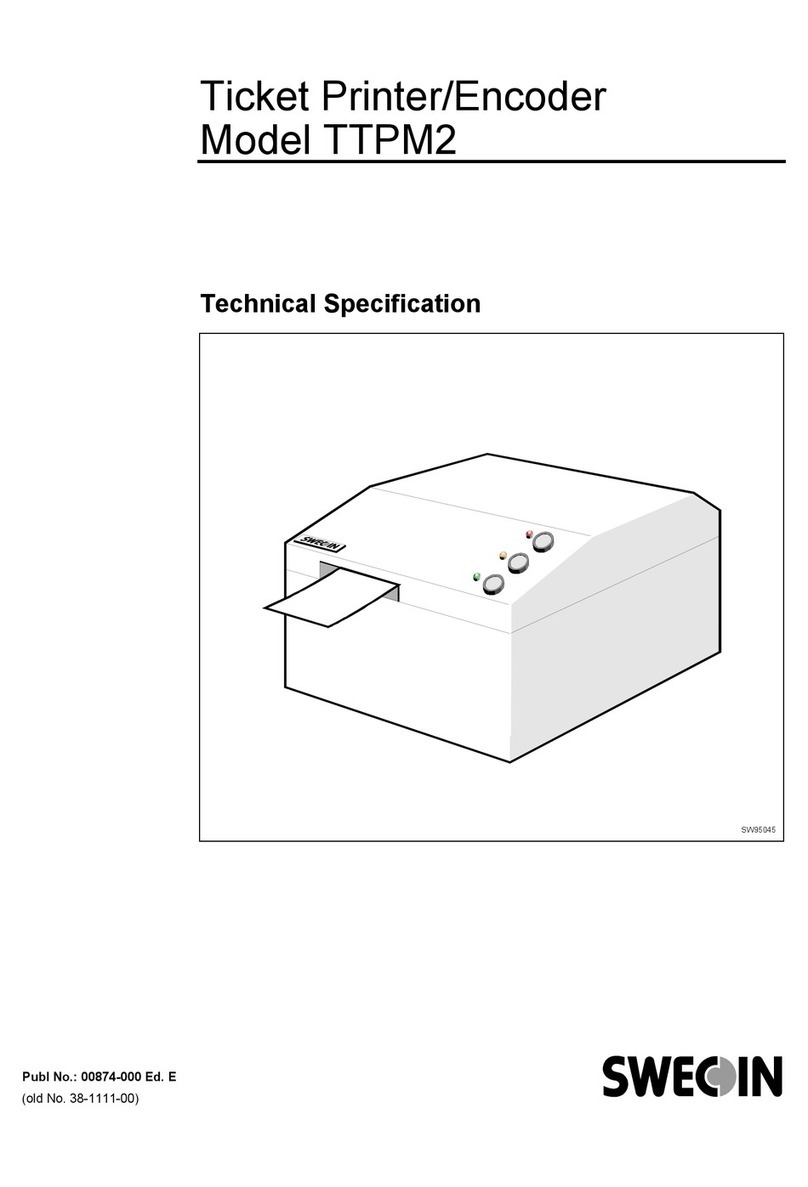
Swecoin
Swecoin TTPM2 Technical specifications
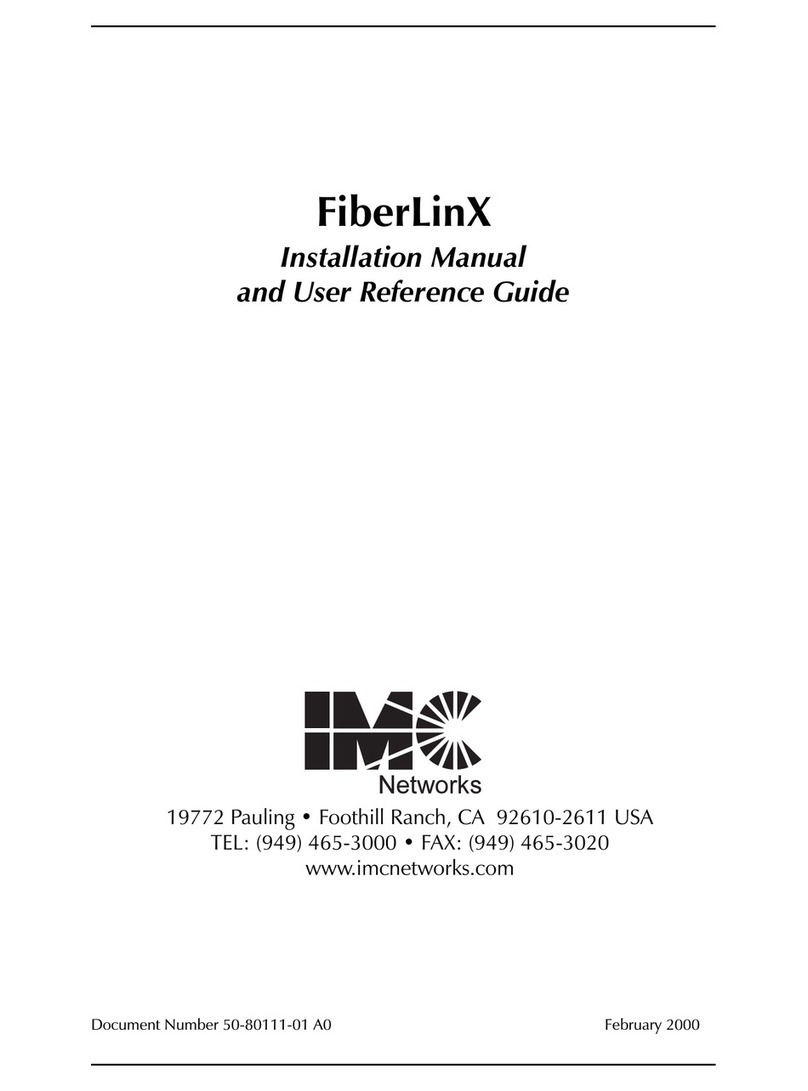
IMC Networks
IMC Networks FiberLinX Installation and reference manual

PEAK COMMUNICATIONS
PEAK COMMUNICATIONS P7001R Installation and operating handbook
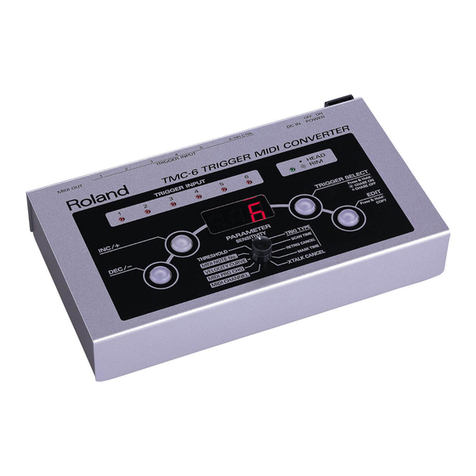
Roland
Roland TMC-6 owner's manual
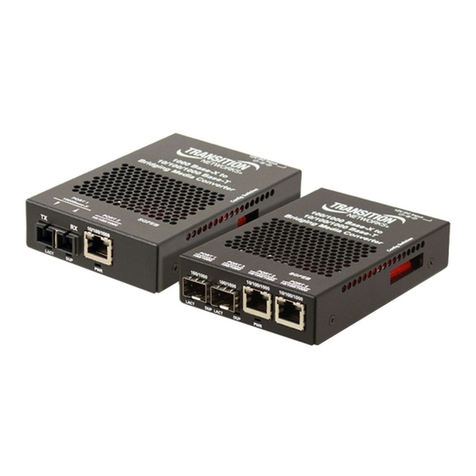
Transition Networks
Transition Networks SGFEB10 Series user guide
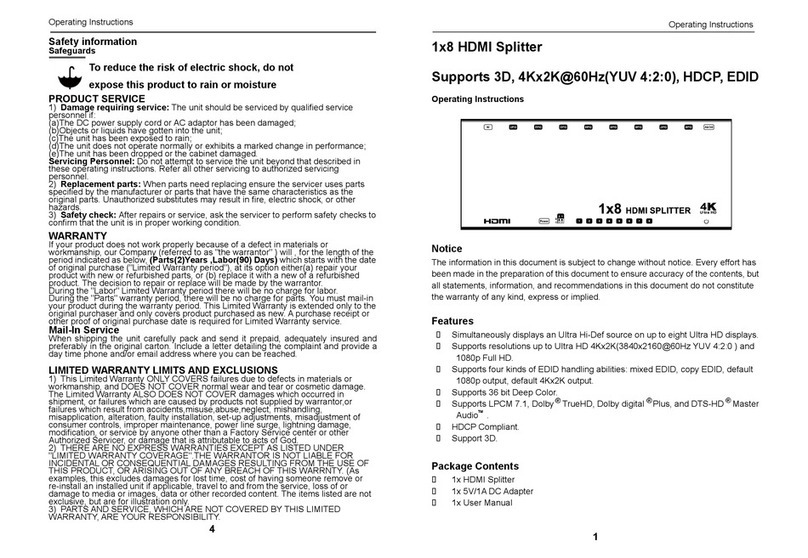
Foxun
Foxun SX-SP148E operating instructions
